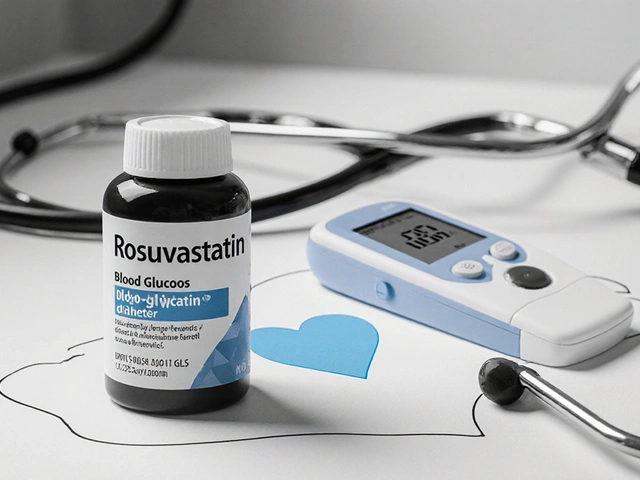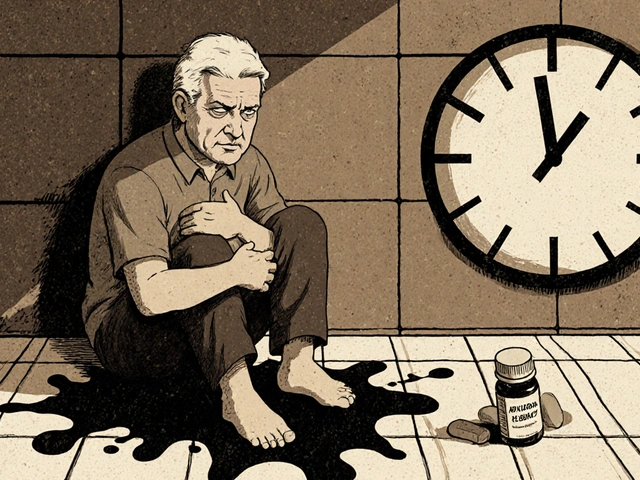Griseofulvin: Quick, Straight‑Forward Facts About This Antifungal
If you’ve been told to take griseofulvin, you probably wonder what it actually does and whether it’s safe. In plain words, griseofulvin is an oral medication that fights fungal infections that live in the skin, hair, and nails. Doctors usually prescribe it for things like ringworm, athlete’s foot, and certain nail infections that haven’t responded to creams.
How Griseofulvin Works (And Why It Takes Time)
Griseofulvin doesn’t kill fungi instantly. It slips into the skin cells and messes with the fungus’s ability to grow and divide. Because the drug works at the cellular level, you’ll often need to stay on it for weeks or even months. That’s why you might hear doctors say, “Finish the whole course, even if the rash looks better.” Cutting the treatment short can let the infection bounce back.
Typical Dosage and What to Expect
Adults usually take 250 mg to 1 g per day, split into two doses. Kids get a dose based on weight—usually 10 mg per kilogram of body weight daily. It’s best to take the pills with a big meal, because food helps the body absorb the medicine better. If you’re on a low‑fat diet, you might need a higher dose since fat improves absorption.
Most people start feeling relief within a week, but the visible signs (like cleared skin) can take 2‑4 weeks. Keep a calendar so you don’t miss a dose, and set reminders if you’re prone to forgetfulness.
Common Side Effects (And When to Call the Doctor)
Griseofulvin is generally safe, but you might notice some mild issues: headaches, nausea, or a little dizziness. Some folks get a rash that looks like the infection is getting worse—this can be a normal reaction, but if it spreads quickly or feels painful, call your doctor.
Rarely, the drug can affect the liver or cause severe allergic reactions. Watch for dark urine, yellowing skin or eyes, or swelling in your legs. Those signs mean you need medical help right away.
Things to Keep in Mind While Taking Griseofulvin
Don’t drink alcohol heavily; it can increase the risk of liver problems. If you’re on birth control pills, tell your doctor because griseofulvin can make them less effective. Also, let any dentist know you’re taking this medication—some dental procedures may need extra caution.
Pregnant or breastfeeding women should avoid griseofulvin unless the doctor says it’s absolutely necessary. The drug can pass into breast milk and isn’t recommended for babies.
Quick FAQ
- Can I take griseofulvin with food? Yes, a fatty meal improves absorption.
- Do I need to avoid sunlight? Griseofulvin can make you more sensitive to UV light, so wear sunscreen if you’ll be outside a lot.
- How long will the treatment last? Typically 2‑4 weeks for skin infections, longer (up to 12 weeks) for nail infections.
- What if I miss a dose? Take it as soon as you remember, unless it’s almost time for the next dose—then skip the missed one and continue as normal.
Bottom line: griseofulvin is a solid option for stubborn fungal infections, but it requires patience and a few lifestyle tweaks. Stick to the prescribed schedule, watch for side effects, and keep your doctor in the loop if anything feels off. With those steps, you’ll give the medication the best chance to clear up the infection quickly and safely.

Not sure if griseofulvin is right? Compare it to terbinafine, itraconazole, fluconazole, and topicals by infection type, cure rates, safety, and real‑world scenarios.
Continue Reading





